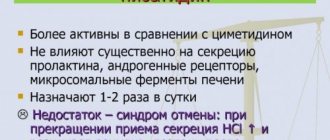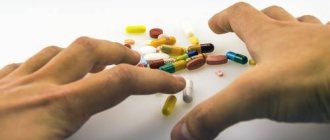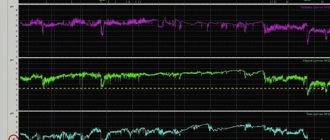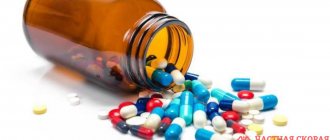Ranitidine is a representative of Ukrainian antiulcer drugs of the second generation. It belongs to H2-histamine receptor antagonists, and helps patients in the fight against peptic ulcers and gastroesophageal reflux disease, in which the production of hydrochloric acid in the stomach increases. The drug has an antisecretory effect.
The drug enters the parietal cells and interacts with the cell membranes of the gastric mucosa through competitive inhibition of histamine-sensitive receptors. As a result, basal and stimulated secretion of hydrochloric acid decreases. There is a decrease in the volume of gastric juice, which is produced during food loads and the action of hormones: gastrin, histamine and pentagastrin on the gastric walls. The drug increases the pH value of the contents in the stomach and reduces the activity of an enzyme called pepsin.
Why is Ranitidine better than analogues?
The medical product is superior to analogue drugs because it is different:
- affordable price,
- ease of use, as it is taken once or twice a day,
- the duration and speed of onset of the therapeutic effect - the effect of the medicine occurs fifteen minutes after administration and lasts twelve hours,
- no toxic effects on the liver,
- possibility of long-term use, as it is prescribed by doctors for the treatment and prevention of relapses of diseases from two to eight weeks, depending on the patient’s diagnosis,
- the practicality of storage at a temperature that does not exceed + 25 degrees, therefore it is used as an “emergency” medicine during trips and business trips.
For what diseases is the drug used?
Doctors prescribe ranitidine tablets for the treatment of exacerbations to patients who suffer from:
- functional dyspepsia,
- chronic gastritis with increased acid-forming function of the stomach, peptic ulcer of the stomach and duodenum, which:
- not caused by the bacterium Helicobacter pylori,
- occurs as a result of stress and taking NSAID medications,
- erosive and reflux esophagitis,
- Zollinger-Ellison syndrome,
- ulcers that occur after operations and are complicated by bleeding.
The medicine is used to prevent the reflux of gastric juice into the respiratory tract when using anesthesia during operations.
Special instructions for the use of Ranitidine
Treatment with H2 receptor antagonists can mask the clinical picture of gastric cancer, therefore, in patients with gastric ulcers, as well as in middle-aged patients, when new symptoms of dyspepsia change or appear before starting treatment with ranitidine, it is necessary to exclude the possibility of malignancy of the process. Regular monitoring of patients (especially elderly patients and those with a history of peptic ulcer of the stomach and/or duodenum) taking ranitidine in combination with NSAIDs is necessary. Rapid administration of ranitidine has rarely caused bradycardia, usually in patients predisposed to cardiac arrhythmias. IV administration of H2-antagonists in doses exceeding the recommended ones led to an increase in the activity of liver enzymes if the duration of treatment exceeded 5 days. There are isolated reports that ranitidine can cause the development of an acute attack of porphyria, and therefore its use should be avoided in patients with a history of acute porphyria. Patients with renal failure require a dose reduction of ranitidine. During pregnancy and lactation, ranitidine should only be prescribed if absolutely necessary.
Contraindications for use
Ranitidine for stomach relief is not prescribed for:
- increased individual sensitivity to the active substance and excipients of the drug,
- malignant neoplasms of the stomach,
- liver cirrhosis and liver failure,
- severe renal failure.
The drug is not used during pregnancy, since the drug penetrates the placenta barrier, and the risk of affecting the fetus cannot be ruled out. Doctors do not use the medicine in the treatment of women who are breastfeeding, because the instructions say that the medicine is absorbed into breast milk. The drug is not used to treat children under twelve years of age.
Pharmacological properties of the drug Ranitidine
Ranitidine is an antisecretory agent, an H2-histamine receptor antagonist. The mechanism of action is due to competitive reversible inhibition of the action of histamine on H2 receptors of the membranes of parietal cells of the gastric mucosa. Suppresses basal and stimulated secretion of hydrochloric acid, caused, in particular, by baroreceptor irritation (gastric distension), food load, the action of hormones and biogenic stimulants (gastrin, histamine, acetylcholine, pentagastrin, caffeine). Reduces pepsin activity. Strengthens the protective mechanisms of the gastric mucosa and promotes the healing of its damage caused by acid exposure, by reducing gastric secretion and increasing the formation of gastric mucus, the content of glycoproteins in it, stimulating the secretion of bicarbonate ions by the gastric mucosa, endogenous synthesis of prostaglandins in it and regeneration processes. The duration of action for a single oral dose is 12 hours. When taken orally, the bioavailability of ranitidine is approximately 50%. The maximum concentration in blood plasma is achieved 2–3 hours after oral administration. With intramuscular administration, the maximum concentration in blood plasma is achieved in the first 15 minutes after administration. Ranitidine is excreted primarily in the urine. Partially metabolized in the liver. The half-life is 2–3 hours. About 93% of the dose administered intravenously and 60–70% of the dose taken orally are excreted in the urine, the rest in feces. Approximately 70% of ranitidine administered intravenously and about 35% taken orally are excreted unchanged in the urine. Penetrates through the placenta and into breast milk.
Side effects
The drug is well tolerated, but rarely causes:
- immune hemolytic and aplastic anemia, decreased levels of leukocytes in the blood and agranulocytosis, thrombocytopenia and pancytopenia,
- severe allergies, which are accompanied by angioedema and anaphylactic shock, urticaria and multimorphic exudative erythema, fever and fever, Lyell's syndrome, itching and rash, dry skin and hyperemia,
- dysfunctions of the nervous system and psyche in elderly patients, which are manifested by increased fatigue, confusion and dizziness, drowsiness and insomnia, anxiety and depression, hallucinations and tinnitus, headache and disorientation, visual impairment,
- disorders in the functioning of the cardiac and vascular systems, which are complicated by hypotension, bradycardia and tachycardia, asystole and arrhythmia, extrasystole and atrioventricular block and vasculitis,
- vomiting and nausea, diarrhea and bloating, decreased appetite and a feeling of dry mouth, attacks of acute pancreatitis,
- arthralgia and myalgia,
- dysfunction of the kidneys, which lead to acute interstitial nephritis,
- increased prolactin in the blood and gynecomastia, amenorrhea, decreased potency in men.
Popular questions about Ranitidine
What is Ranitidine for?
The drug is used in the combined treatment of exacerbations: peptic ulcers of the stomach and duodenum, dyspepsia and chronic gastritis, which increases the production of hydrochloric acid in gastric juice.
How to take Ranitidine?
Adults and schoolchildren from the age of twelve drink orally - one tablet twice a day: in the morning and before bed, regardless of the meal, two tablets once before falling asleep. The course of therapy is two to three weeks. The medication is swallowed and washed down with 1/2 glass of water.
When is it better to take Ranitidine: before or after meals?
Eating does not affect the pharmacological properties of the drug.
Where can you buy Ranitidine?
The medicine Ranitidine is sold in the network of partner pharmacies MIS Pharmacy 9-1-1. They can also be booked using the MIS Pharmacy 9-1-1 website and purchased at a pharmacy convenient to your location.
Ranitidine 150 mg No. 20 tablets
Ranitidine 150 mg No. 20 tablets
Trade name RANITIDINE International nonproprietary name Ranitidine Dosage form coated tablets, 150 mg Composition One tablet contains the active substance - ranitidine hydrochloride 168 mg (equivalent to ranitidine 150 mg), excipients: potato starch, polyvinylpyrrolidone, modified corn starch, magnesium stearate. Opadry OY-C-7000 A shell composition: hydroxypropyl methylcellulose, titanium dioxide E171, ethylcellulose, diethyl phthalate). Description Tablets, coated in white with a grayish tint. Pharmacotherapeutic group Antiulcer drugs and drugs for the treatment of gastroesophageal reflux. H2-histamine receptor blockers. ATC code A02B A02 Pharmacological properties Pharmacokinetics Ranitidine is well absorbed from the gastrointestinal tract. Food intake does not have a significant effect on the absorption of the drug. Maximum plasma concentrations are achieved approximately 2 hours after oral administration. Bioavailability after oral administration is 50%. In small amounts, Ranitidine is metabolized in the liver. The plasma half-life is 2-3 hours. Approximately 30% of the dose taken is excreted unchanged in the urine within 24 hours. Renal clearance is approximately 410 ml/min, indicating active excretion by the renal tubules. The rate of elimination decreases if renal function is impaired. The main metabolite found in the urine, less than 4% of the dose taken, is N-oxide, other metabolites are S-oxide and demethylated ranitidine - 1% each. The rest of the administered dose of ranitidine is excreted in the feces. Ranitidine passes through the placental barrier and penetrates into mother's milk, where its concentration is higher than in the mother's blood plasma. It penetrates the blood-brain barrier to a small extent, so side effects from the central nervous system are rarely noted. Pharmacodynamics Ranitidine blocks H2-histamine receptors. The main effect is associated with a blocking effect on the receptors of the parietal cells of the stomach, as a result of which the secretion of the gastric glands, mainly the release of hydrochloric acid, decreases. The drug inhibits spontaneous gastric secretion; secretion caused by the action of histamine, pentagastrin, caffeine, as well as stretching of the stomach. Ranitidine does not have an antiandrogenic effect because it does not bind to androgen receptors. Ranitidine does not affect pepsin secretion. The drug does not particularly affect the secretion of internal factor stimulated by pentagastrin, and has little or no effect on gastrin levels. After taking a single oral dose of 150 mg, the concentration of the drug in the blood serum required to suppress the spontaneous secretion of hydrochloric acid by 50% is maintained for 12 hours. Indications for use peptic ulcer of the stomach and duodenum (including those associated with Helicobacter pylori) gastroesophageal reflux disease (GERD) treatment and prevention of postoperative, “stress” gastric ulcers prevention of bleeding in peptic ulcers of the stomach prevention and treatment of ulcers and erosions caused by the use of non-steroidal drugs anti-inflammatory drugs (NSAIDs) Zollinger-Ellison syndrome prevention of aspiration of gastric contents during childbirth and during general anesthesia Method of administration and dosage Ranitidine 150 mg is taken orally, regardless of meals, with water. Adults, elderly people and children over 16 years of age: Peptic ulcer of the stomach and duodenum: 150 mg 2 times a day (morning and evening) or 300 mg at bedtime. Course duration is from 4 to 8 weeks. When treating duodenal ulcers, the best results are achieved when using 300 mg 2 times a day for 4 weeks. Chronic episodic dyspepsia: 150 mg 2 times a day or 300 mg at bedtime for up to 6 weeks inclusive. For maintenance therapy, 150 mg is prescribed at night. If treatment does not give the expected effect, additional examination is necessary. Treatment and prevention of erosive and ulcerative lesions of the stomach and duodenum caused by the use of non-steroidal anti-inflammatory drugs (NSAIDs): to reduce the risk of erosion and ulcers, prescribe 150 mg 2 times a day or 300 mg before bedtime for 8 weeks. At the end of treatment, it is recommended to take 150 mg 2 times a day for prophylaxis; the duration of the course is prescribed individually. Erosive and ulcerative lesions of the stomach and duodenum caused by Helicobacter pylori infection: ranitidine 300 mg per day (in one or two doses), amoxicillin 750 mg 3 times a day and metronidazole 500 mg 3 times a day for 2 weeks. Treatment with ranitidine is continued for another 2 weeks. Maintenance therapy: 150 mg at night if there is a history of recurrent gastric ulcers. Gastroesophageal disease: stage I - ranitidine 150 mg per day for 6 weeks. Stage II - ranitidine 300 mg 2 times a day in combination therapy with proton pump inhibitors (PPIs) for up to 8 weeks inclusive. Grade III - ranitidine at a dose of 300 mg 2 times a day in combination therapy with PPIs and prokinetics for up to 8-12 weeks. Zollinger-Ellison syndrome: 150 mg 3 times daily. If necessary, the dose can be increased to 6 g per day inclusive. Treatment and prevention of postoperative, “stress” stomach ulcers, prevention of bleeding of peptic stomach ulcers: 150 mg 2 times a day. Prevention of aspiration of gastric contents during childbirth: 150 mg at the beginning of labor and after 6 hours. Patients at risk of aspiration syndrome: 150 mg 2 hours before anesthesia and preferably 150 mg the previous evening. In case of renal failure, it is not recommended to exceed the dose of 150 mg per day. Use is not recommended for children and adolescents under 16 years of age. If you miss the next dose of the drug, take the next dose at the usual time. Never take a double dose to replace a missed dose. Side effects Uncommon - headache, dizziness, increased fatigue, drowsiness, insomnia - constipation, diarrhea, dry mouth, nausea, vomiting, loss of appetite, abdominal pain, flatulence - skin rash Rare - hypersensitivity reactions (urticaria, fever, bronchospasm, chest pain), angioedema Very rare - hematopoietic disorders (agranulocytosis, leukopenia, thrombocytopenia, pancytopenia, sometimes with bone marrow hypoplasia or aplasia) - urticaria, bronchospasm, Quincke's edema, anaphylactic shock - reversible confusion, depression and hallucinations usually in elderly or seriously ill patients - transient disturbances in the form of spontaneous movements - blurred vision - tachycardia, bradycardia, AV block, extrasystole - vasculitis - pancreatitis - hepatitis (hepatocellular, cholestatic or mixed) with or without jaundice - erythema multiforme, transient alopecia - arthralgia, myalgia - interstitial nephritis - reversible functional disorders of the sexual sphere in men (decreased potency, gynecomastia) The drug is usually well tolerated. Side effects are reversible after reducing the dose or discontinuing the drug. Side effects usually disappear during treatment. Contraindications: hypersensitivity to ranitidine or the excipients of the drug; cirrhosis of the liver with a history of portosystemic encephalopathy; chronic renal failure (creatinine clearance; acute porphyria (history); pregnancy and lactation; childhood and adolescence up to 16 years of age; Drug interactions; absorption of ranitidine is reduced by antacids and sucralfate. Ranitidine should be apply 2-3 hours after using an antacid or sucralfate. There are isolated reports of increased plasma theophylline concentrations and side effects with the simultaneous use of ranitidine and theophylline, therefore the plasma theophylline concentration should be monitored and the theophylline dose adjusted if necessary. In very rare cases In cases where ranitidine interacts with an antidiabetic agent, the concentration of glucose in the blood plasma should be monitored and the dose of glipizide adjusted.Ranitidine increases the acidity of gastric juice, and therefore may affect the absorption of those drugs whose absorption depends on the degree of acidity of gastric juice (for example, ketoconazole, itraconazole) . With the simultaneous use of triazolam and ranitidine, the concentration of triazolam in the blood plasma may increase and its effect may be enhanced. Special instructions Before starting therapy, it is necessary to exclude the possibility of the presence of malignant neoplasms. If renal function is impaired (creatinine clearance). Sudden cessation of the drug may cause an exacerbation of peptic ulcer disease. Peculiarities of the drug's effect on the ability to drive a vehicle or potentially dangerous mechanisms. Caution should be exercised, since in rare cases the patient may experience side effects from the central nervous system. During the period treatment, you should refrain from smoking and drinking alcohol. Overdose Symptoms: increased effects listed in the “Side effects” section. Gait disturbances and hypotension are also noted. Treatment: forced induction of the gag reflex and/or gastric lavage, symptomatic therapy. For convulsions - diazepam in /c, for bradycardia - atropine, for ventricular arrhythmias - lidocaine. In severe cases - hemodialysis. Providing clinical monitoring of the patient. Release form and packaging 10 tablets are placed in a blister pack made of polyvinyl chloride film and printed aluminum foil. 2 packages together with instructions for medical use in the state and Russian languages are placed in a cardboard pack. Storage conditions Store in a dry place, protected from light, at a temperature not exceeding 25 °C. Keep out of the reach of children! Shelf life: 2 years Do not use after the expiration date indicated on the package. Conditions for dispensing from pharmacies By prescription
Note!
The description of the drug Ranitidine on this page is a simplified author’s version of the apteka911 website, created on the basis of the instructions for use.
Before purchasing or using the drug, you should consult your doctor and read the manufacturer's original instructions (attached to each package of the drug). Information about the drug is provided for informational purposes only and should not be used as a guide to self-medication. Only a doctor can decide to prescribe the drug, as well as determine the dose and methods of its use.









